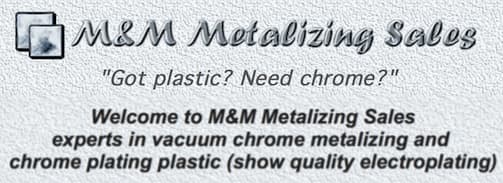
Curated with aloha by
Ted Mooney, P.E. RET

The authoritative public forum
for Metal Finishing 1989-2025

-----
Quality Issue: Brushing Buffed Brass and Nickel Plated Plastic Surfaces
I am currently working on a quality issue with brushing, buffed brass and nickel plated plastic components. This is a manual operation. The quality issue is what I call an incomplete brushed part (small/large spots of unbrushed surface area). Our inspection method consists of a simple visual inspect by operators and quality personnel. This has proven to be inefficient. Are there any other methods for detecting the unbrushed areas or anything that can be used as a visual aid, to increase the detection of non-uniform brushing? Automated brushing is not an option at this time, so the human factor is relevant. Any suggestions will be greatly appreciated.
Zach RobertsonIndustrial - Sheridan , Arkansas, United States
2005
Many have tried and failed to quantify cosmetic appearance. Beauty, they say, is in the eye of the beholder. The best method is to prepare samples of acceptable and non-acceptable appearance which operators and inspectors can refer to so they're all singing from the same music.

Jeffrey Holmes, CEF
Spartanburg, South Carolina
2005
Thanks for the reply. I was afraid that would be the outcome. It is very hard to develop a standard for something that you cannot quantify. We can say that part "x" is a bad part, but then the question of "how bad is it?", will arise. Without a standard how do you know that part "y" is or is not better than part "x"? Thanks again for the reply.
Zach Robertson- Sheridan, Arkansas, United States
2005
You will need a number of samples, showing what is acceptable and what is not.

Jeffrey Holmes, CEF
Spartanburg, South Carolina
2005
Zach,
I'm working in the decorative plating industry and I feel your pain. I've found that a nice wall of parts, brightly lit in your final inspection area showing "barely acceptable" quality is about as good as we could do. Things still slip through the cracks once and awhile as new problems arise. Add 'em to the wall and go on. It's a simple "Hey if it's no worse than this, it is acceptable" wall.
Good luck

Trent Kaufman
electroplater - Galva, Illinois
2005
finishing.com is made possible by ...

Q, A, or Comment on THIS thread -or- Start a NEW Thread